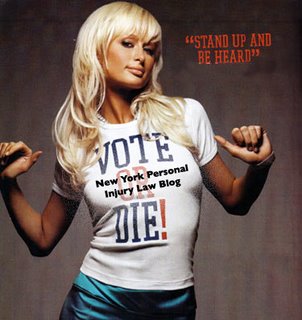 A clearly frustrated Bronx judge vented heavily in an opinion Monday on the vast waste of judicial resources that New York’s No-Fault law has wrought. Supreme Court Justice Paul Victor, trial judge in Vidal v. Maldonado, cited to legislative defects, inconsistent decisions from his superiors at the Appellate Division, First Department, and “cookie cutter” motion practice in implicitly urging legislative reform of the confusing law.
A clearly frustrated Bronx judge vented heavily in an opinion Monday on the vast waste of judicial resources that New York’s No-Fault law has wrought. Supreme Court Justice Paul Victor, trial judge in Vidal v. Maldonado, cited to legislative defects, inconsistent decisions from his superiors at the Appellate Division, First Department, and “cookie cutter” motion practice in implicitly urging legislative reform of the confusing law.
New York’s No-Fault law had originally been designed “to weed out frivolous claims and limit recovery to significant injuries.” In return, car accident victims received some guaranteed medical and lost wage benefits, regardless of who was at fault. (See New York’s No-Fault Law Problem With “Serious Injuries.”)
But instead, due to legislative failure to explain the terms it used in defining what constitutes a “serious injury” under the Insurance Law, it has become a morass of motion practice and inconsistent decisions. This results in “a great expenditure of limited judicial time” trying to define “elusive standards” in the law.
One part of the “serious injury” definition, for example, is that the injury results in “significant limitations of a body function or system,” while another definition is that the injury was a “consequential limitation of a body organ or member.” Justice Victor wrote of the legislature that “The enabling legislation for the No-Fault Law itself provides little or no guidance to the bench and bar as to the scope of the terms used,” and that with respect to the terms above “there appears to be no practical difference.”
Justice Victor has now seen enough, a fact that is evident in the first caption of his opinion: Another Frustrating Assembly Line “Serious Injury” Motion. He goes on to explain how so many of these motions are fought, from both the defendants and plaintiffs perspectives.
The judicial time spent is extraordinary, the judge pointed out. That is because
“a thorough review of the record and current appellate decisions requires a great expenditure of limited judicial time. In any event, the decision rendered is usually challenged and refuted by the losing side; and thus many (too many) of these cases are appealed , and many of those appeals result in non-unanimous (and sometimes acrimonious ) decisions which are often difficult to reconcile with prior precedent.”
He then goes on to discuss some of the precedent from the Court of Appeals, as well as the conflicting opinions of the Appellate Division, First Department, which reviews his decisions on appeal. And there seems to be little doubt they will be seeing this one.
One reason the appellate court is likely to see this is that Justice Victor explicitly rejected one of its opinions calling it “questionable and out of step with the more liberal guidelines provided by the Court of Appeals” with respect to how the law is to be applied. He did this while acknowledging that it is “a precedent which ordinarily would be absolutely binding on this Court.”
In his view, however, he had no choice in rejecting appellate case law. In a section of the opinion after the details of the case are explored — a section entitled Competing Statutes and Rules of Construction — “A Judicial Dilemna” — he says that due to conflicts, he must choose one or the other of how to approach the “difficult and frustrating” task of a judge weeding out frivolous claims or small cases, based solely on paper submissions.
According to the judge, “This legislatively imposed task has caused more than a season of judicial discontent and frustration, it has resulted in an extremely difficult and flawed process which results too often in an inconsistent and unfair application of the law.”
The decision is a must-read for any New York practitioner that deals with automobile cases and the “serious injury” threshold of our No-Fault insurance law. It is a terrific exposition on the confusing state of the law brought on by the legislature.
Links to this post:
A Serious Rant About the Permanent Consequential and Significant …
AUTO – SERIOUS INJURY THRESHOLD – INSURANCE LAW § 5102 Vidal v. Maldonado (Sup. Ct., Bronx Co., decided 12/8/2008) Okay, maybe “rant” is too harsh a term for the court’s critical exposition of the state of the common law on the “serious …posted by Roy A. Mura @ December 29, 2008 9:07 AM



